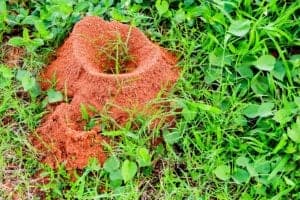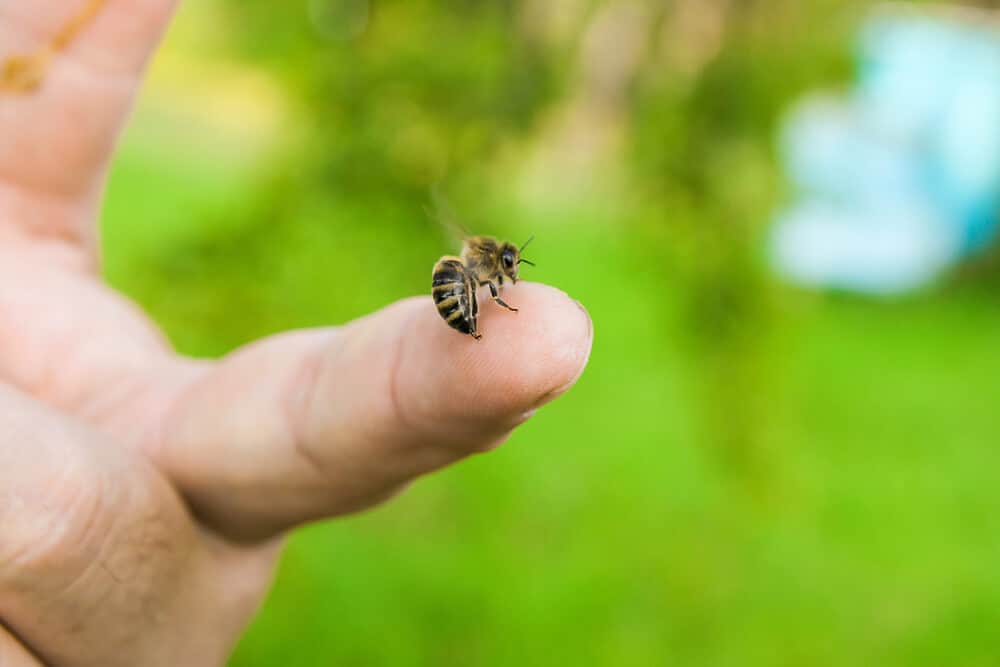Let’s talk about everyone’s least favorite part about warm weather: bugs. It’s hard to go an entire summer without getting at least one bug bite. That’s why it’s important to be able to identify the type of insect bite or sting and how you should treat it. At Mac’s Pharmacy, we’ve put together some of the top tips for treating insect bites and stings.
1. Remove the Stinger
If you get stung by a honeybee or a yellow jacket, they will leave a stinger in your skin. To remove it, gently scrape the area with a flat-edged object, like a credit card. It’s important not to pinch the stinger with your fingers or a pair of tweezers because this can end up injecting more venom.
2. Clean the Bite or Sting
This tip is simple. It’s important to keep the area around the insect bite or sting clean. Keep it clean by washing the area using a mild soap and water.
3. Ice It
 Ice can help with any pain the bite or sting may cause. Place a cold compress or ice pack on the area for 10-minute increments to help reduce both the pain and the swelling. Make sure to wrap the ice in a clean cloth to avoid making direct contact with your skin. You can also take over-the-counter pain relievers such as acetaminophen or ibuprofen.
Ice can help with any pain the bite or sting may cause. Place a cold compress or ice pack on the area for 10-minute increments to help reduce both the pain and the swelling. Make sure to wrap the ice in a clean cloth to avoid making direct contact with your skin. You can also take over-the-counter pain relievers such as acetaminophen or ibuprofen.
4. Avoid Scratching the Itch
We know it’s tempting to scratch the bite if it itches, but it’s important to leave it alone. To help with the itch, apply calamine lotion or a mixture of baking soda and water to the area several times a day.
5. Keep an Eye out for a Severe Allergic Reaction
Insect bites and stings can affect different people in different ways. Some people develop a severe allergic reaction to insect bites and stings. Some symptoms to be on the lookout for are hives, abdominal cramps, nausea and vomiting, swelling of your face, lips or throat, breathing problems and shock. If you experience any of those symptoms shortly after being stung or bitten by an insect, you should call 911 or local emergency services immediately.
Types of Bug Bites
When you get bit, you’re going to want to know what type of insect bit you. Here are some of the most common bug bites and how you can identify them:
Mosquito Bites: Mosquito bites are small, round, puffy bumps that appear as soon as you’ve been bitten. The bump becomes red, hard, swollen and itchy.
 Fire Ant Bites: Fire ant bites appear as swollen red spots that develop a blister on top. The stings burn and itch, and can last up to a week. They may cause a severe allergic reaction in some people, resulting in swelling, itching and difficulty breathing.
Fire Ant Bites: Fire ant bites appear as swollen red spots that develop a blister on top. The stings burn and itch, and can last up to a week. They may cause a severe allergic reaction in some people, resulting in swelling, itching and difficulty breathing.
Chiggers: These bites can show as welts, blisters, pimples or hives. They typically appear in groups and can be extremely itchy.
Tick Bite: Tick bites cause pain and/or swelling at the bite area. They can result in a rash, burning sensation, blisters or difficulty breathing. The tick often remains attached to the skin for a long time. When removing the tick, use caution so that no part of the tick’s body is left on your skin.
At Mac’s Pharmacy, your health is our top priority. If you have any questions about insect bites and stings and how to treat them, stop by one of our locations or contact us! We are happy to help.









